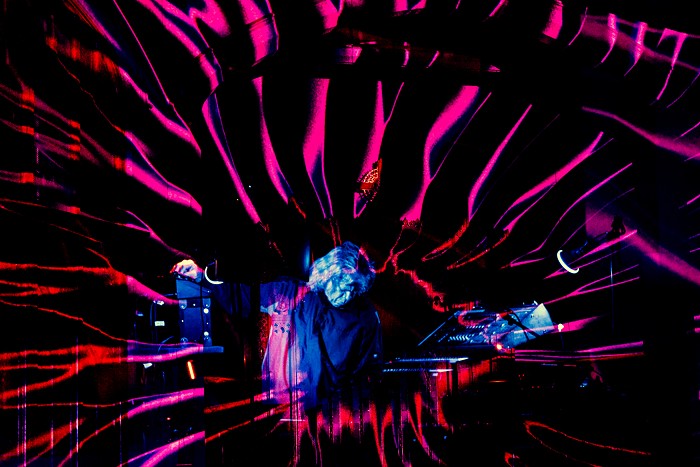
Last week, the New York Times Magazine released a devastating, detailed report from Jody Rosen about a fire at Universal Studio’s Hollywood back lot in 2008. That fire incinerated an enormous warehouse filled with master tapes from Universal Music Group’s (UMG) mammoth catalog—much of those recordings ending there through mergers and acquisitions of countless smaller record labels.
Many master recordings of well-known, epoch-defining musicians were lost, as were unreleased tracks by legendary artists and rare obscurities by unknown acts and long-dissolved labels—but an accounting of what the warehouse actually contained was never properly kept, so the full scope of losses remains unknown. Rosen’s in-depth account is a heartbreaking story, and a must-read for music lovers and historians, as the harrowing loss is on par with the burning of the Notre Dame Cathedral, the 2018 fire at Brazil’s National Museum, and other scourings of historical and cultural artifacts.
UMG, somewhat insultingly, downplayed the damage at the time of the fire, insisting nothing important was lost. But this new report laid undeniable waste to that claim, and UMG, which at first pushed back against Rosen’s reporting by again denying culpability, seems like it is finally owning up to its responsibility for losing what is estimated to be 500,000 irreplaceable master recordings.
I mention all this as preface to an evaluation of UMG/Capitol’s recent vinyl rerelease of Miles Davis’s Birth of the Cool, a collection of 12 recordings made by Davis and a revolving-door assortment of musicians in 1949 and 1950. We can only thank the jazz gods these master tapes were far away from the Universal back lot when it went up in flames. The Birth of the Cool recordings not only mark the start of Davis’s long career as a bandleader, they pinpoint the germination of the “cool jazz” subgenre, a laid-back, smooth style that emerged alongside—not in opposition to—the heated, busy bebop playing of the era. Even within a jazz canon littered with historic recordings, the Birth of the Cool tapes are near the top of the list of the most important recordings ever made.
They weren’t recognized as such at the time. Eight of the tunes were contemporaneously released on four 78 rpm singles by Capitol Records, but were more or less forgotten until 11 of them were collected onto a long-playing record in 1957, after Davis's career had gained steam. (Later reissues included the last remaining of the group’s 12 tracks, a schmaltzy vocal number that sticks out like a sore thumb.) This new vinyl release, titled The Complete Birth of the Cool, collects the complete sessions, and tacks on a second disc of two live radio broadcasts from the era (which were first released on CD in 1998, also under the name The Complete Birth of the Cool).
UMG has done a more-than-admirable job with this new vinyl presentation, but its release, timed so close to Rosen's excellent reporting, also points toward the shortcomings of the music industry at large—not just UMG—in treating important musical legacies and their listenerships with the proper respect.
But first, the music itself, which is infinitely more complex and interesting than it may at first sound to our jaded ears in 2019. In the late 1940s, the big band era was decidedly on its way out, as World War II had led to bands with large lineups to slash their rosters for both financial reasons and due to the lack of men at home. But Davis and his collaborators, including arranger Gil Evans, had great affection for the mellifluous, intricate harmonies of those large groups, and were also in the thrall of classical composers like Bartok and Prokofiev. Inspired by jazz bandleader Claude Thornhill and his use of unusual jazz instruments like French horn and tuba, Davis’s nine-piece group wrought complicated chords and counterparts, all while eschewing vibrato so that each part could be heard cleanly. The result was a restrained, “cool” sound that was more suited for head-nodding and toe-tapping than cutting a rug.

UMG’s treatment and packaging of this incredibly important source material has some very laudable points. The album jacket is a sturdy, tip-on gatefold, and the attached booklet includes great photo reproductions and extensive new liner notes (with a couple typographical errors and a short passage repeated twice) that put these recordings in the proper context, emphasizing the important contributions from Davis’s various collaborators. The session dates and personnel rosters are plain and thorough. And—most importantly—these recordings sound terrific.
Slight demerits, then, for UMG’s cost-cutting by pressing the record at a GZ pressing plant—the Czech company with several plants across the globe and a less-than-perfect track record among vinyl enthusiasts—rather than one of the high-end audiophile plants. My disc two arrived noticeably warped, and there is some surface noise evident on both discs, even after cleaning.
There is also a lack of transparency about the source material. The hype sticker reads, “Remastered from Original Session Tapes,” which suggests it was an all-analog process. However, for tapes of this age, that’s virtually impossible, and I think for a record of this importance, a full disclosure of the complete process of restoration is mandatory. This is not specifically diagrammed in the liner notes, but the mastering team went back to the original reel-to-reel tapes and made a new, high-resolution digital assembly of the album (at 192/24, the highest resolution possible).
Doing so was likely unavoidable, due to the age of the tapes—dropouts and tape stretching were very likely present—and because making a new analog assembly for each LP side would actually result in a lost generation. And while analog purists will balk at the introduction of any digital step, there’s simply no arguing with how good the music sounds here: exceptionally detailed, almost like a Kobe-beef massage for your ear, and all the more impressive for it being a small-scale mono recording that predated the high-fidelity advancements of the late 1940s and ’50s that were just around the corner.
Now, if you’re not a vinyl head, there’s probably nothing new for you in this version of Birth of the Cool. It’s essentially a fancy treatment of that definitive 1998 CD reissue, with a fine new transfer of the album itself, but the same live bonus material from the CD. (This extra disc is sourced from 44.1/16 files, the same resolution as WAV files and CDs.) The live stuff, while neat, is hardly essential, in this writer’s opinion.
For vinyl lovers, however, the main disc, with all of the legendary studio recordings, is very well presented. And the team behind the reissue should be proud of that fact—to the point that a detailed breakdown of how they got it to sound so good should be de rigueur for every historical rerelease going forward. Such a thing would help inform why hanging onto the artifacts of bygone eras is so important, and why a warehouse fire in Hollywood is such a calamitous tragedy. For Universal Music Group, this rerelease of The Complete Birth of the Cool is a welcome countermeasure against what has been lost to the ages. It’s a great step in the right direction. And now it’s time for even greater steps.


















